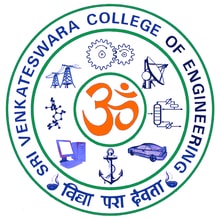TRIBOLOGY
WHAT IS TRIBOLOGY
Surface is the most important part of any engineering component. It is well known that most components fail from surface in the form of wear, corrosion, fatigue or fracture. Demands are constantly being made for surfaces with improved tribological performance. Surface engineering, as opposed to bulk alloying, provides an opportunity to improve the wear resistance of engineering materials while leaving the bulk characteristics relatively unchanged. Surface texturing involves modifications of surface topography by creating an identical micro-relief with commonly shaped asperities or dimples. It helps to improve adhesion of the coating and to enhance the tribological properties of substrate materials. Among the various texturing techniques, laser surface texturing is one of the emerging techniques, which involves fabrication of artificial, regularly patterned microdimples over the substrate surface by a material ablation process with a pulsating laser beam, and thus it was employed to pattern substrate surfaces.
LASER SURFACE TEXTURING
The surface texturing with laser beam is extremely fast, requires short processing time and environment friendly. It provides excellent control of shape and size of the micro dimples, which allows realization of optimum designs. Micro dimples were done on the polished specimens by using a commercial pulse Nd:YAG laser beam and its working principle is shown in Figure 1. By controlling energy density, the laser can safely process metals, ceramics, and polymers as well as crystalline structures. Laboratory investigations of wear are usually carried out either to examine the mechanisms, by which wear occurs, or to simulate practical applications and provide useful design data on wear rate and coefficient of friction.
SLIDING WEAR TESTING METHODS :
Laboratory investigations of wear are usually carried out either to examine the mechanisms, by which wear occurs, or to simulate practical applications and provide useful design data on wear rate and coefficient of friction. In this research, pin on disc tribometer will be used to determine the friction force, friction coefficient, wear volume and specific wear rate under unidirectional sliding motion. Pin on Disc Tribometer As outlined by ASTM G99-04, pin-on-disk testing consists of a rotating disk in contact with a stationary cylindrical pin along with an applied normal load at the top. The schematic diagram of a pin on disc wear testing working principle is shown in Figure 3. The rotary wear friction test reproduces the rotational motion found in many real-world tribology mechanisms. A stationary, precisely known weight cylindrical pin (specimen) is loaded onto a rotating disc (counterbody) at a specific position from the center of rotation. As the disc starts rotating, the pin tip creates a rotational wear track. Friction force was accurately measured during the test by a load cell contacting with the cantilever arm in the machine. Friction coefficient was calculated from the friction force with known normal load applied. Wear rates for the pin and the sample are calculated from the volume of material lost during the test. A wide variety of testing is possible by varying sliding radius, normal load and sliding speed during the test. The tribological properties such as, friction coefficient, wear volume, specific wear rate and wear mechanisms can be analysed through this instrument.
OBJECTIVES
- To improve the wear resisting performance of light metal substrates and make it suitable for industrial applications such as aerospace, marine and automotive components.
- To enhance the surface properties of light metal substrates through laser texturing techniques.
- To fabricate micro-dimples on substrate surface using laser surface.
- Experimental investigation of coating performances, such as wear volume, specific wear rate and coefficient of friction using pin on disc tribometer.
- Investigating the significance of laser parameters, dimple geometry, coating architecture and applied normal load on wear volume, specific wear rate and coefficient of friction.



